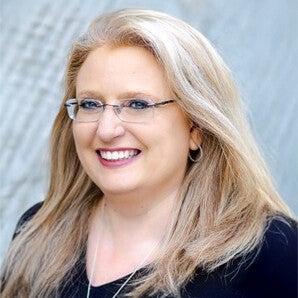Bridging the Gap Between Finance and Development in Endowment Reporting

Effective endowment management is a cornerstone of financial sustainability and mission fulfillment for nonprofits, higher education institutions, and healthcare organizations. But all too often, a critical barrier stands in the way: silos between finance and development teams. When these two departments don’t communicate effectively, the repercussions can ripple across your organization, impacting everything from donor trust to compliance with legal standards.
Breaking down these silos isn’t just a matter of convenience—it’s an essential step toward transparency, efficiency, and stronger stewardship. By fostering collaboration and leveraging the right tools, you can simplify your endowment management processes and ensure that every dollar is working to achieve your mission.
The Problem with Silos in Endowment Data
When finance and development teams operate in isolation, the disconnect creates unnecessary challenges that can harm your endowment management. For example, donor stewardship becomes much more difficult when development staff lack access to up-to-date data on fund usage. Imagine a gift officer trying to have a meaningful conversation with a donor but lacking the information to explain how their contribution made a tangible impact. This gap can undermine trust and even discourage future gifts.
On the compliance side, silos can lead to costly errors. Finance teams need to ensure that funds are spent in alignment with donor intent, which requires clear communication about restrictions and spending policies. Without access to donor agreements or a shared understanding of those intentions, compliance risks escalate, potentially jeopardizing your organization’s reputation and legal standing.
Even day-to-day operations can suffer. Silos often mean data duplication, inconsistent terminology, and slower reporting processes. Leadership might make key decisions based on outdated or incomplete information, delaying projects and causing frustration among stakeholders. In short, silos between finance and development hinder transparency, reduce efficiency, and weaken your ability to fulfill your mission.
What Data Should Be Shared Between Finance and Development
To bridge the gap between finance and development, you first need to align on what data is essential to share. The goal is to create a unified picture of your endowment that both teams can access and rely on.
One critical piece of shared information is donor intent and restrictions. Finance must know how to allocate funds in compliance with legal and ethical obligations, while development needs to demonstrate to donors that their contributions are being used as intended. For example, if a donor gives to fund a specific scholarship program, both teams should have access to the original agreement to ensure accurate implementation and reporting.
Fund performance and utilization are also key areas where collaboration is vital. Finance tracks investment returns, spendable balances, and distributions, but development teams need this information to communicate effectively with donors and plan for future campaigns. If development knows a specific fund has grown significantly, they can use that success story to inspire other donors. It’s hard to ask a donor to give another donation if you haven’t spent the previous one.
Lastly, spending policies should be clearly communicated and understood by both teams. These policies guide how much of the endowment’s income can be disbursed annually while preserving the corpus for long-term sustainability. When both teams are on the same page about these guidelines, they can make decisions that align with both donor expectations and organizational goals.
How to Unify Your Endowment Data
Achieving true collaboration between finance and development begins with intentional steps to unify your endowment data. First, it’s crucial to clarify terminology. For example, terms like corpus, spendable income, and distributions can mean different things to different people. By standardizing definitions across teams, you reduce the risk of misunderstandings and create a common language for discussions.
Next, integrate your systems. Manual data entry or exporting data from one platform to another isn’t just time-consuming—it’s a breeding ground for errors. Integrated software solutions that connect your fundraising and accounting systems ensure that both teams have access to the same accurate, real-time data. This integration minimizes duplication and streamlines workflows, so you can spend less time managing spreadsheets and more time focusing on strategic decision-making.
Also think about accessibility. Dashboards and shared reporting tools allow team members to find the information they need without waiting for someone else to provide it. For example, creating view-only dashboards for development staff ensures they can check fund balances and disbursement details on their own. The finance team can easily share information on fund utilization to make sure departments spend all available funds for maximum mission impact. This not only saves time but also empowers teams to act with greater independence and confidence.
Finally, foster a culture of collaboration by ensuring everyone understands their role in the endowment management process. Finance and development teams have complementary roles. When both sides recognize the importance of their contributions, they’re more likely to work together effectively.
A Connected Ecosystem: The Role of Technology
The right technology can transform your endowment management by creating a connected ecosystem where finance and development teams collaborate seamlessly. Solutions like Blackbaud Raiser’s Edge NXT® and Blackbaud Financial Edge NXT® are designed to bridge the gap between fundraising and accounting, offering integrated tools that streamline processes and enhance transparency.
With these platforms working together, gift officers can easily track how funds are being spent in alignment with donor intent. At the same time, finance staff can access donor and fund details without relying on back-and-forth emails or manual data sharing. This real-time access ensures that everyone is working from the same information, reducing confusion and delays.
Technology also simplifies compliance and audit preparation. For example, automated accounting workflows can enforce spending controls, ensuring that disbursements don’t exceed budgeted amounts or violate donor restrictions. Comprehensive reporting capabilities allow you to demonstrate accountability to donors and stakeholders, fostering trust and confidence in your organization’s stewardship.
When development teams can quickly generate reports showing the impact of a donor’s gift, they strengthen relationships and increase the likelihood of future contributions. Meanwhile, finance teams benefit from reduced workloads and fewer errors, as automated integrations handle the heavy lifting of data management.
By investing in a connected ecosystem, you create a foundation for long-term success—one that supports your mission while simplifying day-to-day operations.
Unlocking the Full Potential of Your Endowment with the Right Tools
Breaking down silos between finance and development is more than a best practice—it’s a necessity for effective endowment management. By sharing data, integrating systems, and fostering collaboration, you can create a more transparent, efficient, and accountable process. This benefits your teams and strengthens relationships with donors and demonstrates your commitment to fulfilling your mission.
If you’re ready to take the next step, explore how Blackbaud’s solutions can help. With CRM and fund accounting tools like Raiser’s Edge NXT and Financial Edge NXT, you’ll have everything you need to align your teams, simplify reporting, and build trust with your stakeholders. Check out our resource, Simplifying Endowment Management with Fund Accounting Software, to learn more.



